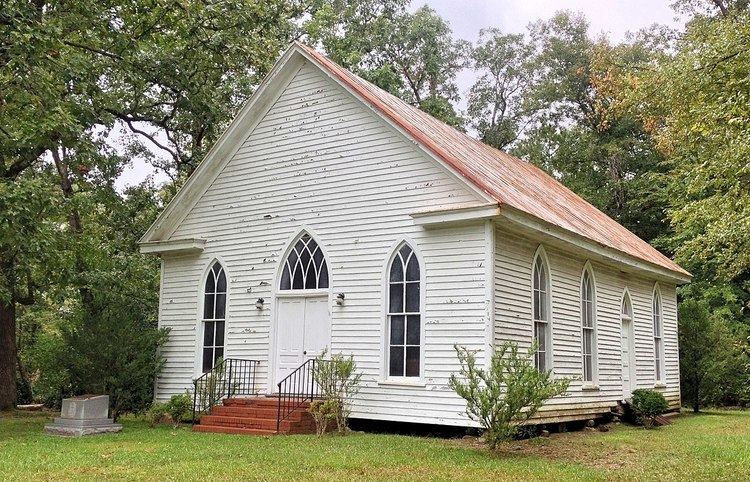Built c. 1900 (1900) NRHP Reference # 85001457 Added to NRHP 5 July 1985 | MPS Chatham County MRA Area 8,000 m² | |
 | ||
Architectural style Gothic Revival architecture | ||
O'Kelly's Chapel is a historic chapel located near Farrington, Chatham County, North Carolina. Named after Reverend James O'Kelly and was built about 1900. It is a modest one-room rural chapel with Gothic Revival features including a steeply pitched roof and lancet windows.
It was listed on the National Register of Historic Places in 1985.
The History of O’Kelly Chapel
O’Kelly Chapel was the home church of James O’Kelly, founder of the Christian Church. O’Kelly entered the ministry as a circuit-riding Methodist preacher in the 1780s. At that time, the Methodist Church was not an organized “denomination,” but a movement within the Church of England. After the American Revolution, these Methodist societies sought to break from England and form a church patterned after the hierarchical structure of the Church of England.
O’Kelly and others protested at the organizational conference that the church should not concentrate so much power in the bishop but be structured more democratically, with self-government for ministers and churches. O’Kelly envisioned “a republican [meaning ‘free’], no-slavery [O’Kelly’s 1789 “Essay on Negro Slavery” posited that all Methodist ministers should manumit their slaves.], glorious church” that would be congregationally based. The church was to reflect the democratic principles of the newly formed United States, organized into conferences with each pastor having equal authority and laymen having a voice, too.
Eventually, due to their deep convictions, O’Kelly, 36 other ministers, and 10,000 lay people pulled out of the Methodist church to form a church association called “Republican Methodists.” In 1794 these dissenters formally took the name “Christian” and agreed to be governed by five fundamental principles:
1. The Lord Jesus Christ is the only head of the Church.
2. “Christian” is a sufficient name for the Church.
3. The Holy Bible is a sufficient rule of faith and practice.
4. Christian character is a sufficient test of fellowship and membership.
5. The right of private judgment and liberty of conscience is a right of privilege of all.
O’Kelly, leader of the movement, moved in 1794 to Chatham County, North Carolina, and gathered a congregation which eventually took the name O’Kelly Chapel. In 1797, he began a congregation in Orange County known as the Damascus Christian Church. He also began Martha’s Chapel in Apex in 1803. O’Kelly served these three congregations as a circuit-riding preacher for a number of years.
The Christian Church founded by O’Kelly was primarily a movement in eastern Virginia and the upper Piedmont of North Carolina. In time, other churches were started and there were mergers with other church groups, e.g., a group of dissenting Baptist churches in Vermont. Though never a large church movement, the Christian Connection (as these churches often referred to the larger structure) was a national connection.
The congregation first worshiped together in 1794, probably in O’Kelly’s home. In 1803, about two acres of land were given to the Christian Church on which to erect a church building. Over time, several different structures were built on the site. The current church, built in 1910 and shown above, is the fourth. Part of a cemetery with about 100 graves is also on the property. In 1968, the site was posted with a North Carolina Highway Historical Marker (see photo above) and listed in 1985 on the U.S. Department of the Interior, National Park Service’s National Register of Historic Places.
Based on similar policies with emphasis on local autonomy, the Christian Church united in 1933 with the larger Congregational Church to form the Congregational Christian Church. With similar theological roots and claiming an ecumenical future for the American Protestant Church, the Evangelical and Reformed Church (from a German Calvinist heritage) and the Congregational Christian Church (with an English Calvinist heritage) merged in 1957 to create the United Church of Christ.
